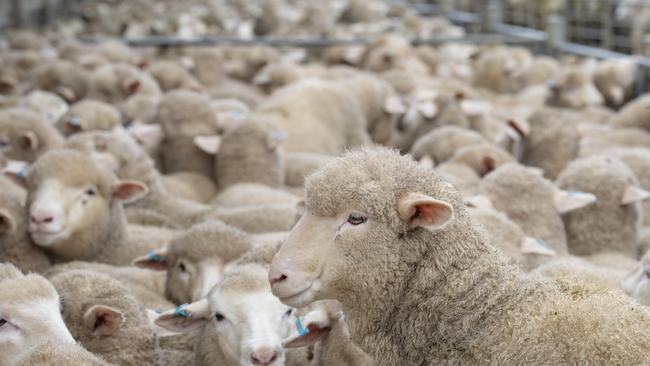Consultant warns lamb producers over alarming income figures
Rising costs and meat processors pushing more demands onto producers are making many enterprises unprofitable, a new study shows.

Lamb producers face a profitability “bloodbath” this year, a large-scale analysis of prime lamb systems warns.
And unless lamb prices almost double – to around $12/kg – producers may realise returns below 4 per cent.
These were the findings of Wagga Wagga, NSW based consultancy Agrista’s John Francis who crunched the numbers on clients’ enterprises producing 500,000 dry sheep equivalent lambs across three southern states over five years, 2019 to 2023.
“Processors are pushing the cost of higher carcass weight and lamb shearing onto producers, and it’s starting to hurt,” Mr Francis said.
He said Agrista benchmarking revealed composite-dominated prime lambs performed the poorest of five livestock enterprises ranked on operating profit per DSE. Rising costs and woeful broad micron wool prices eroded profit, compared to dual purpose sheep, wool sheep, beef and trade cattle.
For prime lamb producers, average wool income declined 66 per cent or $6.89/DSE as wool prices slipped $4.60/kg clean over the period and wool costs rose 42 per cent, by $1.93/DSE.
“Wool has gone from generating a positive net return of $5.81/DSE to a negative net return of $3/DSE over the period assessed,” he said.
Concurrently, asset values lifted 80 per cent, so to meet a 4 per cent return-on-asset target, an operating profit of $28/DSE in 2019 equalled $51 in 2023.
“Given the average COP/kg carcass weight was $6.47 in prime lamb enterprises in 2023, after adjusting for wool costs, (meat) price received would have to be $11.83/kg carcass weight to deliver a 4 per cent operating return in 2023, and the market is a long way from that currently,” he said.
Given net costs were unlikely to fall, Mr Francis said producers should consider “levers they have to increase production; including genetics, pasture base, weaning percentage and stocking rate”.
“The figures I’ve looked at are for 2022-23. So 2023-24 data is going to be a bloodbath,” he said, adding there was a “five-fold difference in profit between elite lamb producers and the average”. For some, shedding sheep could be an alternative, however the switch was not always straightforward, he said.
Large-scale prime lamb seedstock producer John Keiller – who breeds composite maternals, terminals and shedding sheep at Cashmore Park, Portland – said his area experienced the driest February since 1991 and “the cost structure has gone up while returns are down”.
“We just have to ensure we hold our ground now so we’re well set up for when good times come again; that we position our ewe flock well for a high production year,” he said.
“The longer-term trend I see is more producers moving into shedding sheep as quality gets better and people use them to expand their operations with lower labour costs”.





